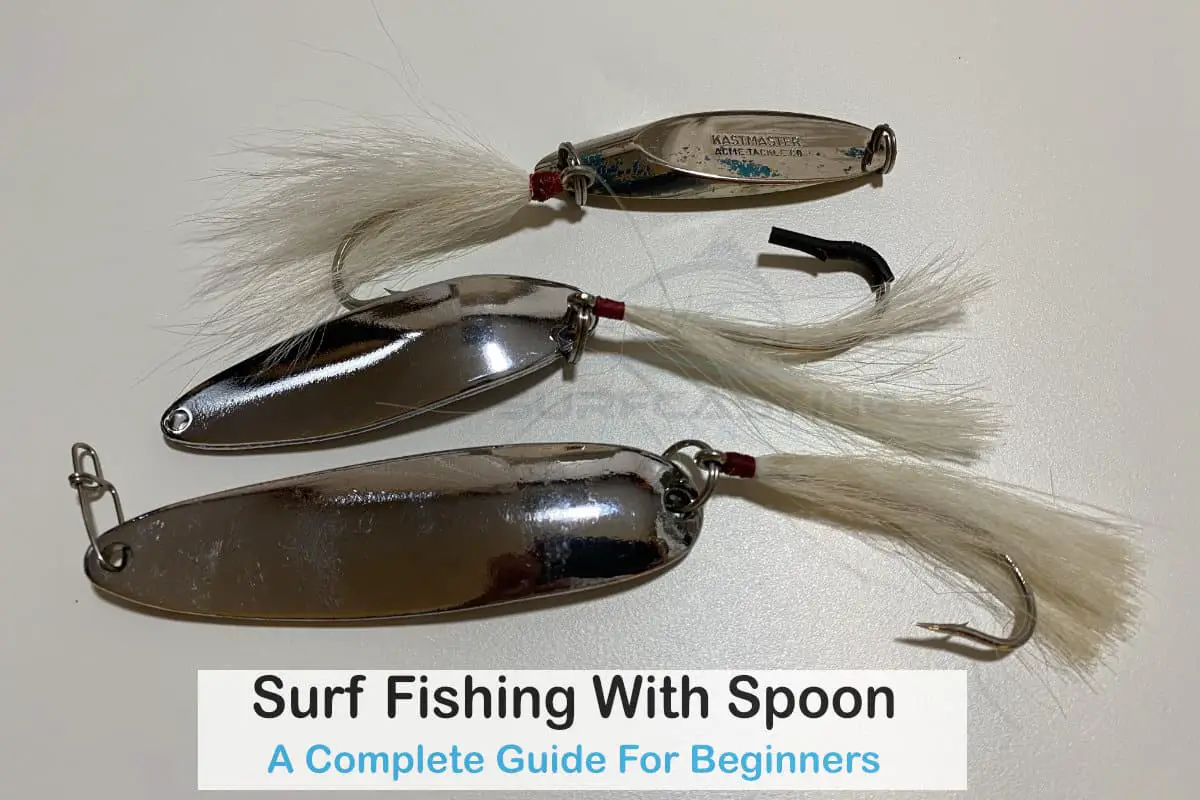Spoons or casting spoons are used sometimes, amongst fishers, as a type of bait. Don’t be fooled by the title; spoons aren’t the type that you would eat soup from. Fishing spoons are usually oval-shaped lures, shaped like the bowl of a spoon with a hook attached to them.
Spoons attract fish by their “flash and flutter.” They reflect light and wobble like a slow-moving baitfish. There are several measurements and forms of spoons, designed to attract and hook different kinds of fish.
Surf fishing with a spoon![]() is virtually the same as using any other lure. There are different types of spoons to go over, and we will be explaining surf fishing as well. Put the two together, and you’ll be able to surf fish with spoons soon enough!
is virtually the same as using any other lure. There are different types of spoons to go over, and we will be explaining surf fishing as well. Put the two together, and you’ll be able to surf fish with spoons soon enough!
How To Use Spoon For Surf Fishing?
If you need a refresher on surf fishing in general, we have included it below. Fishing with spoons is found most often in a simple design, they are shiny, and one side dips in like a regular spoon.
How your spoon works and the amount of bobbing you get depends on the style of spoon you have. We’ll talk more about this in just a bit.
The main thing that changes when surf fishing with spoons![]() is the location you are fishing at and the type of lure you are using. Surf fishing differentiates itself from other types of fishing, such as merely fishing on a boat: fishing while standing on the shore.
is the location you are fishing at and the type of lure you are using. Surf fishing differentiates itself from other types of fishing, such as merely fishing on a boat: fishing while standing on the shore.
The other thing that changes is the type of lure that you use, which in spoons is about five main types of spoons. There are specialty spoons out there, but those aren’t the main focus for beginners in surf fishing![]() .
.
Different Types of Spoons You Can Use For Surf Fishing
When you go to purchase your spoon, you might be overwhelmed by the choices available. There are different types of spoons, and they can look somewhat similar as well. Let’s check out some of the kinds of spoons you might encounter.
Casting
Casting spoons are usually metal and are the most common type of spoon. They are generally oval-shaped and bob around. Suitable for fish like trout or flounder and lots of species near the shore.
Trolling
Trolling spoons tend to be less oval and more of an elongated shape. They are very light, so they can’t be used as casting spoons. They are best for trolling, and you’ll find that fish in open waters seem to be attracted to them like tuna or mackerel.
Weedless
This is for things like fishing where there is a lot of plants, weeds, wood, or logs. There is only one hook on this lure and a wire guard. Adding an extra trailer can make it more attractive and is suitable for any holes you may see when fishing.
Jigging
Jigging spoons are most often metal and are probably one of the heaviest of the spoons. They are suitable for fish like bass and usually are shiny. They’re so heavy that they get down to the bottom quicker as well. You want to use short jerky motions for this spoon to get the best allure from it.
Surface
Lastly, are surface spoons. There would be the type of spoons used for larger fish like pike; they float upward towards the surface of the water. When using them, you should make sure that the rod’s tip is directed towards the spoon.
Things to Consider When Using A Spoon Lure
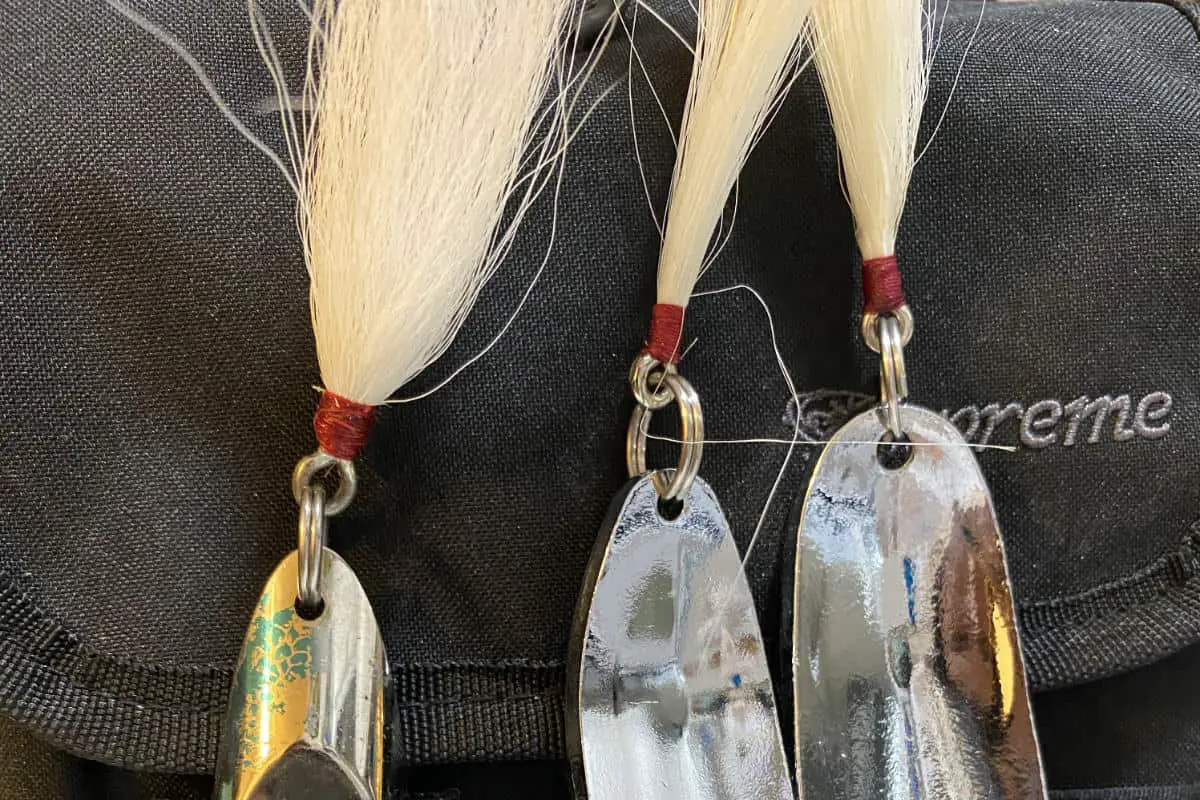
Sometimes when fishing, we don’t think about the little things that make all the difference. Some things to consider if you have trouble surface fishing with spoons would be things like:
- Weight
- Reading the area
- Activity
Regarding weight, different spoons have different weights because of their material or shape. This means that sometimes a spoon will fall slower or faster because of it. Consider practicing with your new lure to see how hard you need to be throwing your line.
To read the area, check that you are casting your line straight from the shore. If this is the case, you may not be getting the right amount of area in the water. You could be sending your spoon out too far and casting your lure beyond the region of fish. Remember that you are near the shore, and if you don’t cast your line out far enough, you won’t be able to get anything to bite.
As for activity, you want to mind your surroundings. If you see birds circling out in the open water, this is a great indicator of fish present and active in the area. You can also mind any sand bars or troughs you may see.
Surf Fishing Basics
Now that you know more about the kinds of spoons, you need to understand the first part of the journey, which is surf fishing. Surf fishing is fishing from the shore, aka the surface.
You can catch a lot of different types of fish from the shore, so if you don’t own a boat or are not comfortable on the water, surf fishing could be the way to go for you.
Here are some surf fishing basics that you want to know:
Surf Casting
if you’ve done regular casting, you’ll find it’s not that different a technique. However, in surf casting, you put more importance on your line’s distance because you’re onshore. Casting overhand is a fundamental and effective way to throw your line out.
Conditions
Paying attention to the conditions of the beach can be helpful when surfcasting. Looking at the water flow, if it’s high tide or low tide![]() along with riptide, can let you know your chances of catching anything. If a beach has a lot of things washing up on shores like shells and crabs, that means that there’s more fish hidden close by.
along with riptide, can let you know your chances of catching anything. If a beach has a lot of things washing up on shores like shells and crabs, that means that there’s more fish hidden close by.
Forecast
The weather![]() can affect the fish the same way it does for other animals. It is a little different, though, as fish have their own set of rules. If it’s a little drizzly out, for example, then fish can be more tempted to take the bait in confusion. There is also bound to be more fish if the water is more on the shore, such as rising tide or high tide.
can affect the fish the same way it does for other animals. It is a little different, though, as fish have their own set of rules. If it’s a little drizzly out, for example, then fish can be more tempted to take the bait in confusion. There is also bound to be more fish if the water is more on the shore, such as rising tide or high tide.
Good gear
No matter what you’re doing, you want to make sure you have the appropriate equipment ![]() to do it well. This is why having some good gear
to do it well. This is why having some good gear![]() is a priority when learning how to surf fish. Some things to consider would be a rod, a net, a knife, line, first aid kit, fishing license
is a priority when learning how to surf fish. Some things to consider would be a rod, a net, a knife, line, first aid kit, fishing license![]() , and of course, your spoon.
, and of course, your spoon.
If you’ve ever been fishing before, much of this information should be fairly familiar to you. The main difference is just your location and that you are trying to throw the line out farther. Now, moving on to where to take your spoons for some good surf fishing.
Right Places to Surf Fish with Your Spoons
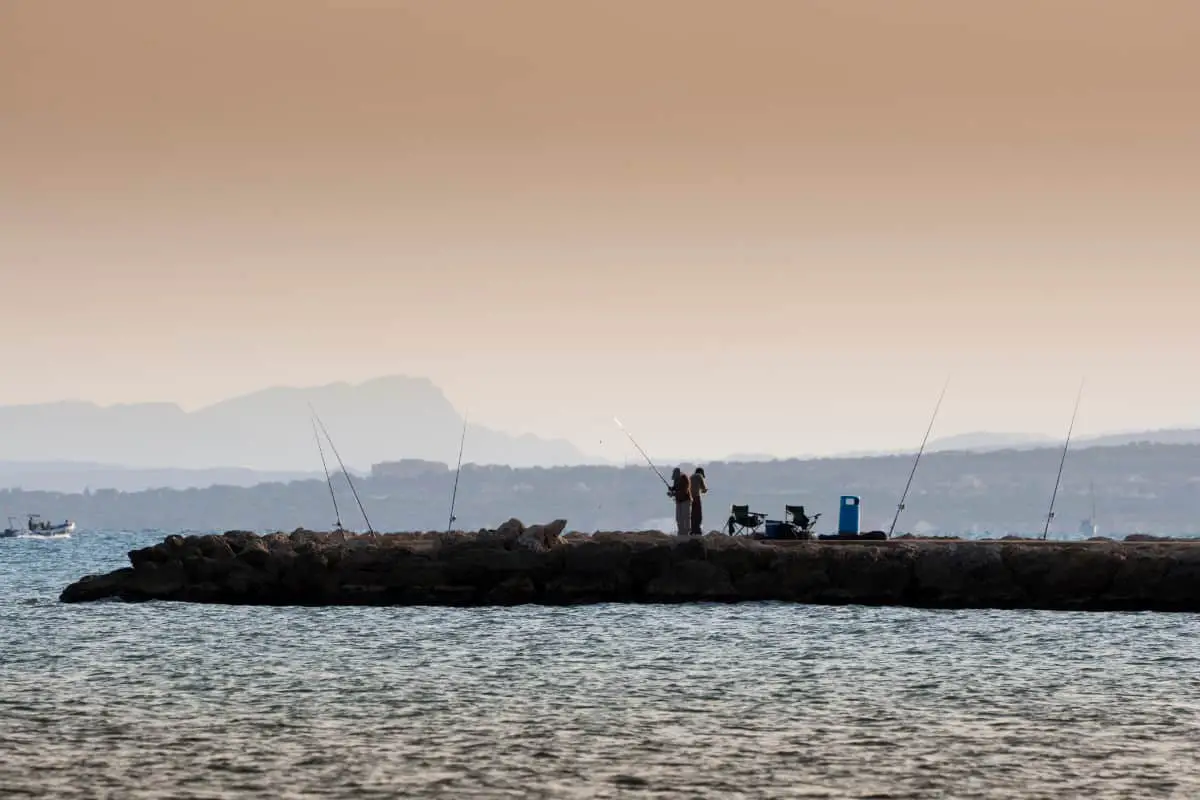
Surf fishing is partially about where you go to cast your spoon![]() out. One thing to remember is that there is saltwater spoon fishing and freshwater fishing.
out. One thing to remember is that there is saltwater spoon fishing and freshwater fishing.
Here are some great areas for saltwater spoon fishing:
- Troughs
- Jetties
- Breakwaters
- Points
- Inlets
- Batfish spaces
- Deep shore water
- Breakers
- Colliding waves
- Weed begging
- Beach shores
When looking up freshwater shore fishing locations, you are best off typing that into a search, such as “surf fishing locations” near your spot. There are bound to be specific places around you that you can throw your spoon into that are specifically freshwater.
You can also search for a local surf fishing club near you. Many states or counties have websites where you can search out fishing spots, like this one from Michigan.
Other ways to find great spots include consulting resources like these:
- American Sportfishing Association

- TakeMeFishing.org
 (Recreational Boating and Fishing Foundation)
(Recreational Boating and Fishing Foundation) - Coastal Angler Magazine

Surf Fishing With Spoon Tips
You may run across some rough spots when you’re surf fishing, so here are some tips and tricks to help you out along the way:
- If you get your spoon stuck, try to wiggle it free. Spoons are relatively easy to get loose from any snags, and if it’s a heavier spoon, it will get out a lot easier than lighter ones. You want to position yourself right over the snag for the best pull back.
- You might experience some line twist, in which case you can try out a swivel. You could potentially also use a snap, as they make changing lures very uncomplicated. However, snaps can make the user a bit more forgetful about retying as often as you should, so if something large tugs on your line too hard, it could snap.
- A spoon with a single hook will ensure fewer snags compared to something like a treble. Hooks with that C shape, like drop shot hooks, will also get caught on things less. We all know snags are super annoying, especially when they get in the way of a potential catch, so having something that snags less like a spoon lure makes fishing a much better experience.
- When fishing with timber, its recommended to compress the barbs located on your hook. Without the bars on the hook, you can get it free from wet wood quicker. Heavier spoons are best for working with wood because of the weight of it, as mentioned earlier, gets it free more effortlessly.
- If fishing in weeds, consider combining your spoon with a braided fishing line
 . That way, if your spoon gets pulled off your line, you don’t have to worry about reeling it in fast enough. You could get a bite right away as it bobs around.
. That way, if your spoon gets pulled off your line, you don’t have to worry about reeling it in fast enough. You could get a bite right away as it bobs around.
Best Surf Fishing Techniques Using Spoon
During surface fishing, you want to have a good technique whilst using your spoons. After all, you can’t rely entirely on the spoons themselves to do all the work. Luckily, there are already techniques out there for you to practice off of.
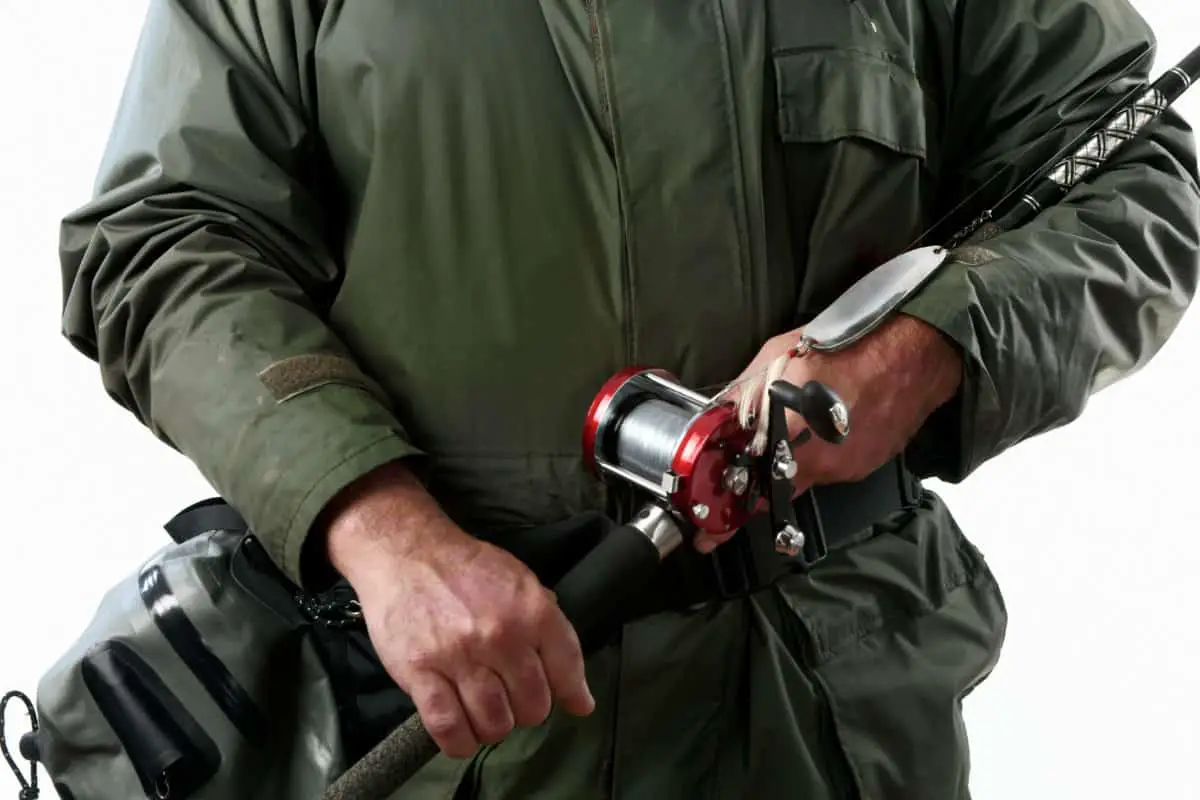
Vertically Jigging
Vertical jigging is a technique used by people who depend on spoons far and wide. Spoons are the best for this technique because of their unique body type. Spoons are flashy, and their shapes give them a fluttery style that fish can’t resist.
Swimmin’
This is a good technique for flat areas, with a light spoon being the best. Shallow places are ideal for this style of spooning; you want to focus on the indented side of your spoon, and when you throw it into the shore, draw it back and forth as you reel it in. This makes the spoon flash the fish, and it wobbles around as well.
Trollin’
Trolling spoons excel in their sparkly glimmer and their wiggle. This is a technique for any depth of water, changing the spoon itself to accommodate for various speeds and how deep you want your line to be cast. Dragging is the way to go for trolling your spoon.
Poppin’
Popping means casting your spoon past where a fish is surfacing and making sure that the tip of your rod is high enough. You want to keep your baited spoon high and ‘pop’ it back to you. The spoon lures look like a live fish bait because of how it’s coming in and out of the water in that wiggly way only a spoon can deliver.
Pitchin’
You may have heard of pitch plastics before, but spoons also work for pitching. With softer plastic pitches, the bait moves slower, and the fish has more time to be indecisive. With a spoon, the bait moves quickly, and the fish has to go after it right away.
Casting your line out and letting the spoon flutter down is one option to start the pitch. In this, you want to make sure to pull at your line to see if it can go down deeper. If you catch a fish, you can pitch in that same area, as sometimes you’ll find schools of fish together.
Best Surf Fishing Spoon Lures
There are a wide variety of spoon lures for surf fishing, there are some recommended ones for spoons and specifically, surface fishing spoons here:
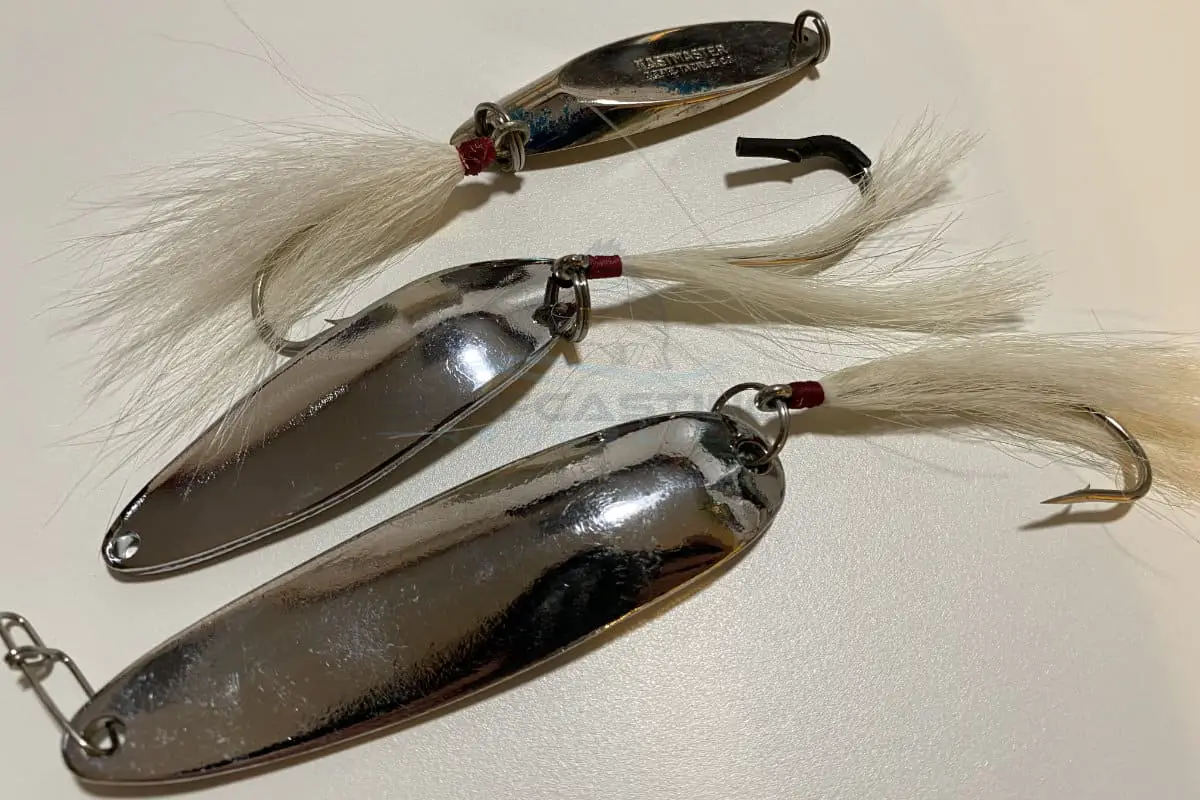
Sea Striker Surf Spoon![]() – Resembles baitfish, good for a variety of fish. comes in silver and gold, and weighs 1/2 and 3/4 ounces. Very reflective and it’s good in long casting for surf fishing.
– Resembles baitfish, good for a variety of fish. comes in silver and gold, and weighs 1/2 and 3/4 ounces. Very reflective and it’s good in long casting for surf fishing.
Johnson Splinter Fishing Bait![]() – Classic aesthetic, high-quality metal. Long-lasting and made for long surfcasting wobbles without tangling your line. Comes in 15 different colors with different colors, weights, and sizes.
– Classic aesthetic, high-quality metal. Long-lasting and made for long surfcasting wobbles without tangling your line. Comes in 15 different colors with different colors, weights, and sizes.
Goture Long Distance Cast Metal Spoon ![]() – Colorful, vibrant, and in eight sizes. Has a pack of 10 available. Aerodynamic casting.
– Colorful, vibrant, and in eight sizes. Has a pack of 10 available. Aerodynamic casting.
Sougayilang Fishing Spoons Lure ![]() – It comes with 5 different flashy color to attract the fish, good for Striper and anglers Eye-catching, lightweight and equipped with super strong sharp hook.
– It comes with 5 different flashy color to attract the fish, good for Striper and anglers Eye-catching, lightweight and equipped with super strong sharp hook.
South Bend Super Spoon![]() – Many different weights for different weather conditions. Good for different sizes of fish. Smooth carefree reeling, 3 different styles.
– Many different weights for different weather conditions. Good for different sizes of fish. Smooth carefree reeling, 3 different styles.
Nicolas Flutter![]() – Excellent quality wiggling and strong rings. Very reflective with 6 different designs. Good strong hook with sharp treble.
– Excellent quality wiggling and strong rings. Very reflective with 6 different designs. Good strong hook with sharp treble.
South Bend Kastaway Spoon![]() – Small sized spoon, wobbling movement. Good for murky water, is lightweight so good for trips. Not great for weeds, you want to go in shallower water. Ok with saltwater surf fishing as well.
– Small sized spoon, wobbling movement. Good for murky water, is lightweight so good for trips. Not great for weeds, you want to go in shallower water. Ok with saltwater surf fishing as well.
Kastmaster Spoon![]() – Battle tested by many anglers. Best spoon that I am using so far. Ideal for Striped bass
– Battle tested by many anglers. Best spoon that I am using so far. Ideal for Striped bass![]() and other species. It comes with different color and designed.
and other species. It comes with different color and designed.
Pulling it All Together
So, what have we learned about surface fishing with spoons? We learned that it’s not that different from regular fishing off a boat or a bridge. About how you want to throw out your lure so that you catch the maximum amount of fish.
And about the different kinds of spoons available for surf fishing and their techniques. Hopefully, you’ve discovered some information that gets you excited to pack up your gear and find yourself some spoons and the perfect spot. With all of this together, all that’s left it to gather up your equipment and go practice.

